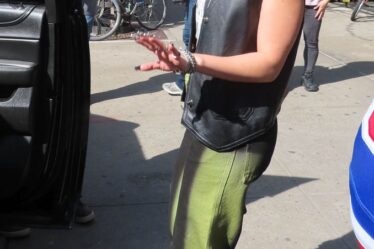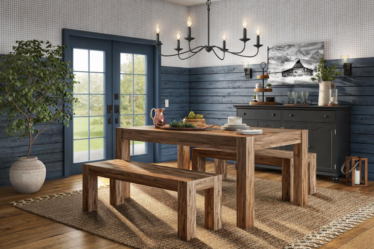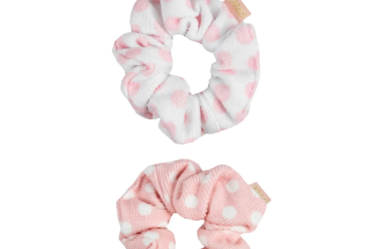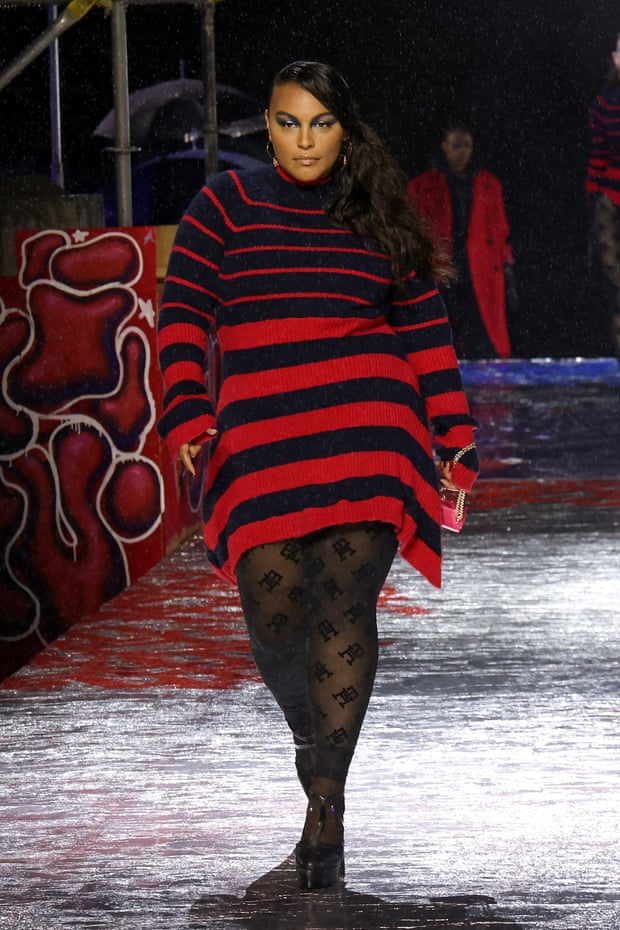
Tommy Hilfiger brought his $9.3bn brand back to New York for the first time in three years with an autumn show inspired by Andy Warhol that also managed to be one of fashion week’s most diverse.
Plus-sized model-of-the-moment Paloma Elsesser and Native American model and activist Quannah Chasinghorse shared a foil-covered catwalk at Brooklyn’s Skyline Drive-In, alongside actor Julia Fox, former editor of Warhol-founded Interview magazine Bob Colacello and about 20 unknown street-cast faces.
As ever with Tommy Hilfiger, the Sunday night show was as much about the vibe as the fashion. Silver balloons recalling Warhol’s 1966 work Silver Clouds decorated the stage, Hilfiger-branded water cans were handed out and Lady Bunny, another Warholian muse, played Donna Summer tracks.
The audience included Kate Moss, two Kardashians and musician Travis Barker, who later stormed the stage in a Tommy Hilfiger puffer coat. Everyone watching wore a rain poncho. Miraculously, not one of the 80 models fell.
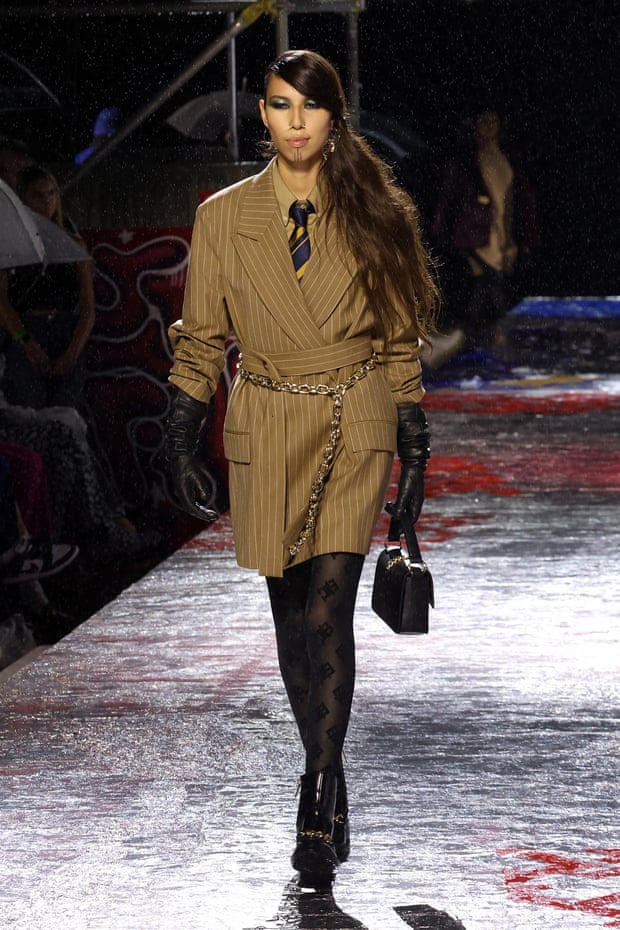
“I want things to be as varied and diverse as they possibly can,” Hilfiger said before the show. “I got that from Andy. I met him in the 80s, he brought me into the Factory and he singlehandedly showed me how important it was to surround oneself with pop culture icons which was very influential in moving my brand forward.
“He also offered me one of his pieces for a thousand dollars, but I couldn’t afford it. Now I have a fair few.”
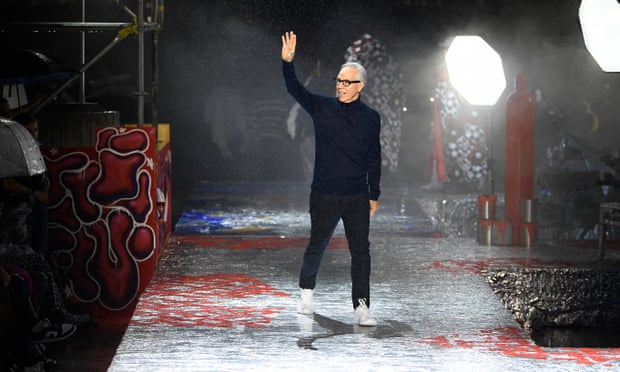
The clothes themselves were a lesson in star-spangled preppiness, though it felt more Mean Girls than Love Story, taking the rawest collegiate iconography – varsity prints, cheerleader costumes and logos – and turning them into chunky knits, thick scarves and supersized dresses.
A modernised TH logo, designed by streetwear illustrator Fergus Purcell, covered oversized puffers. Most models wore thick elbow-length gloves and carried tiny bags or expansive holdalls. Buried within the 80 looks was Hilfiger’s collaboration with British designer Richard Quinn, which added a floral romance to tartan checked suits, punky spiked leather jackets and yet more puffers.
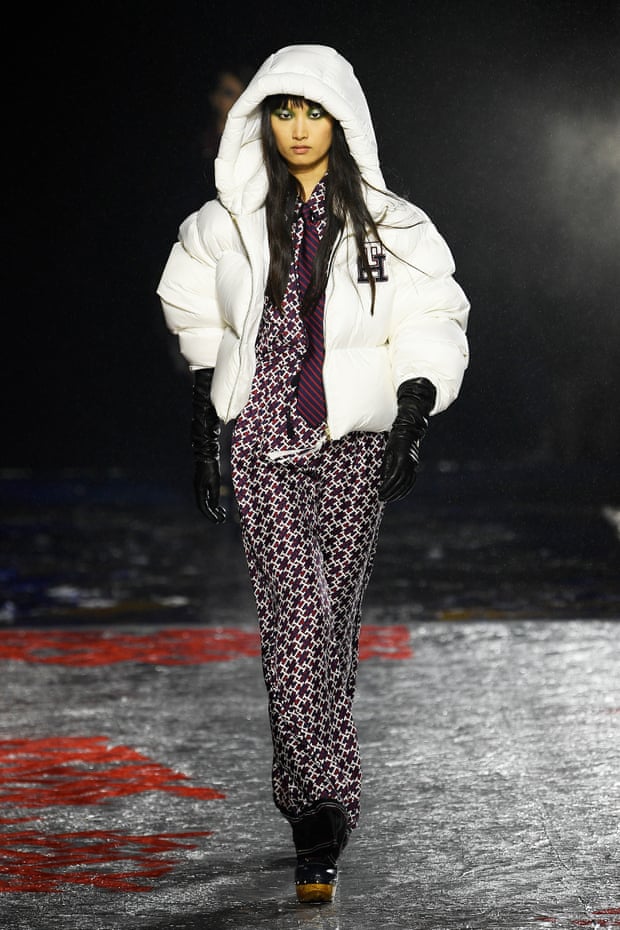
The influence of Warhol has been well-trod in fashion. In 1991, Versace created its famous neon Pop collection, splashing dresses with mugshots of Marilyn Monroe and James Dean. In 2011 and 2014, Jeremy Scott borrowed Warholian iconography for his eponymous label and Moschino, respectively.
Warhol’s influence on Hilfiger’s show was comparatively nuanced, focusing on the factory element of the show (guests were abler to watch models get their hair and make up done), and the way Warhol and Hilfiger built their brands on accessibility and familiar visual identity. Warhol used soup cans and Marilyn Monroe, while Hilfiger used stars and stripes. It was also about the two men though, and friendship: “we were both doing preppy at the same time – you could say it is a meeting of preppy minds.”
Chasing the chimera of generation Z has been a Hilfiger priority for the last decade and Sunday’s show was also livestreamed on a Roblox global platform and shown, via avatars, on a digital catwalk.
It was also, unusually for fashion week, available to buy (most collections show a season in advance). “We’re in New York, we’re in The Factory but we’re also in the metaverse” he added. “You gotta keep it fresh”.

